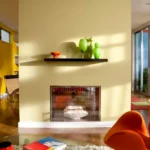Designing the Perfect Home Office: Tips and Inspiration
Designing a home office involves more than just setting up a desk and chair. It’s about creating a space that inspires productivity, fosters creativity, and supports your work-from-home routine. Whether you’re a freelancer, remote worker, or entrepreneur, here are practical tips and inspirational ideas to help you design the perfect home office.
1. Choose the Right Location
Key Considerations:
- Privacy and Distraction: Select a quiet area away from high-traffic zones to minimize distractions.
- Natural Light: Prioritize spaces with ample natural light to boost mood and productivity.
- Accessibility: Ensure easy access to necessary amenities like power outlets and internet connections.
2. Invest in Comfortable and Ergonomic Furniture
Essential Elements:
- Quality Desk and Chair: Choose a desk that suits your work style and a chair that supports good posture.
- Ergonomic Accessories: Consider ergonomic keyboards, mouse pads, and monitor stands to prevent strain.
3. Prioritize Organization and Storage
Practical Solutions:
- Storage Solutions: Use shelves, cabinets, or drawers to keep supplies and paperwork organized and within reach.
- Declutter Regularly: Maintain a clutter-free workspace to enhance focus and efficiency.

4. Design for Functionality and Efficiency
Workspace Setup:
- Layout and Flow: Arrange furniture to facilitate movement and workflow.
- Multi-functional Space: Incorporate zones for tasks like meetings, brainstorming, and relaxation.
5. Enhance Aesthetic Appeal with Personal Touches
Inspirational Decor:
- Color Scheme: Choose colors that promote concentration and creativity, such as blues, greens, or neutrals.
- Artwork and Greenery: Incorporate inspiring artwork and indoor plants to add life and personality to your workspace.
6. Optimize Technology and Connectivity
Tech Integration:
- Reliable Equipment: Invest in quality technology and ensure strong internet connectivity for seamless workflow.
- Cable Management: Keep cables organized to maintain a tidy and safe workspace environment.
7. Create a Productive Atmosphere
Ambiance and Comfort:
- Lighting: Combine natural light with task lighting to reduce eye strain and create a well-lit workspace.
- Comfort Zone: Include a comfortable seating area or reading nook for breaks and relaxation.
8. Incorporate Personal Wellness Solutions
Well-being Focus:
- Standing Desk Option: Consider a height-adjustable desk to alternate between sitting and standing positions.
- Quiet Zone: Designate a space for meditation, yoga, or relaxation exercises to recharge during breaks.
9. Consider Soundproofing Solutions
Noise Management:
- Sound Absorbing Materials: Use rugs, curtains, or acoustic panels to minimize noise disruptions.
- Headphones: Equip yourself with noise-canceling headphones for focused work sessions.
10. Maintain Flexibility and Adaptability
Future-Proofing:
- Modular Furniture: Choose furniture that can be easily rearranged or expanded as your needs evolve.
- Update Regularly: Stay adaptable by incorporating new technologies and design trends over time.
Conclusion
Designing the perfect home office is about creating a space that not only meets your practical needs but also inspires productivity and supports your well-being. By integrating ergonomic furniture, efficient organization, personalized decor, and technological essentials, you can transform any area of your home into a functional and inviting workspace. Whether you prefer a minimalist setup or a more eclectic style, prioritize comfort, functionality, and personalization to design a home office that enhances your professional life and complements your work-from-home experience.



